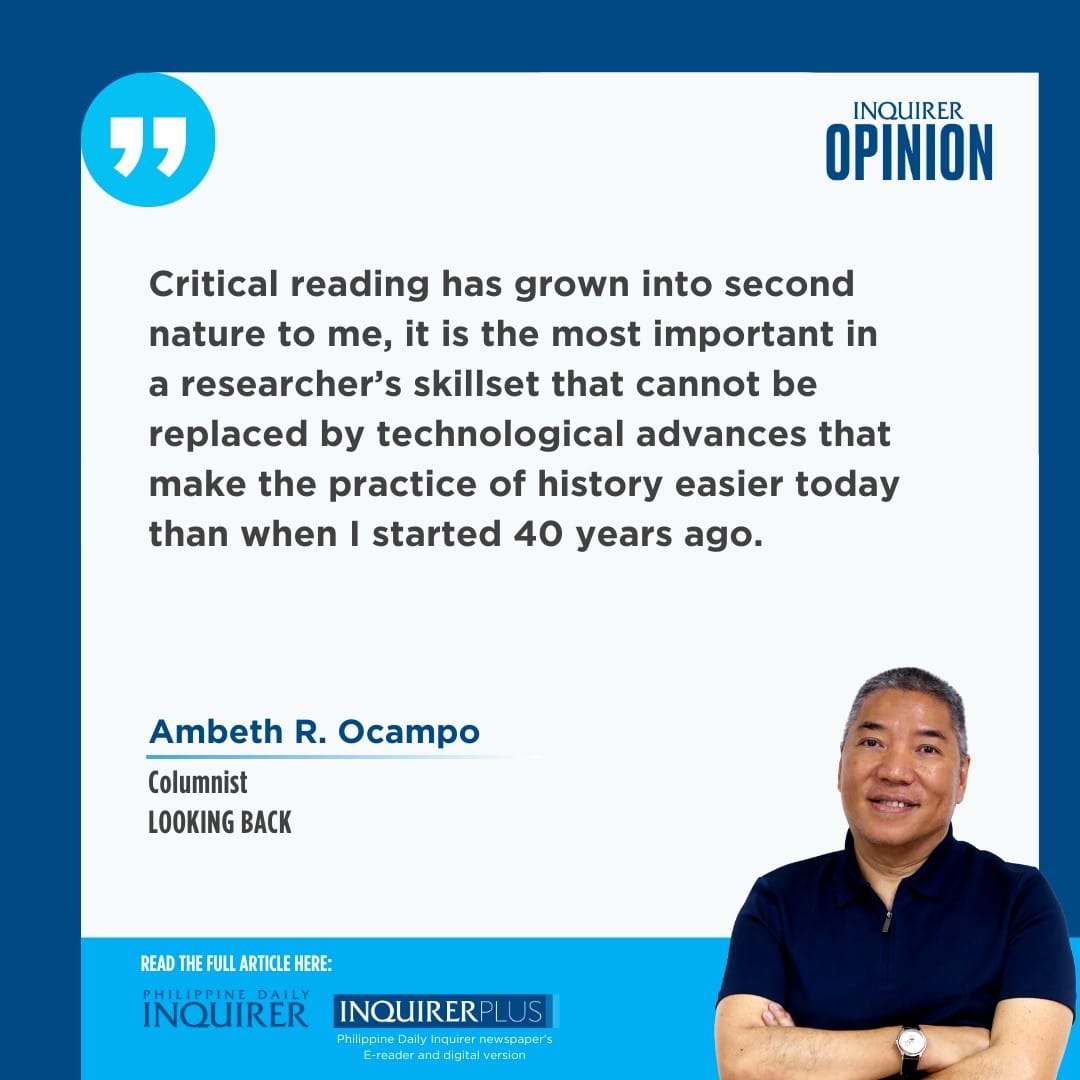Reading history
Do pharmacists take a course on reading prescriptions? Physicians are said to have the worst handwriting. In Japan, old doctors prescribe in German schrift, the type of writing Jose Rizal sometimes used that is illegible to me. Looking back, I learned to decipher and read ancient writing and inscriptions on the job. It is a skill sharpened by decades of constant practice. In retrospect, my life would have been easier if I had taken courses on paleography, the study of ancient handwriting, or epigraphy, the study of inscriptions.
While most viewers found the fingerprint expert in the Senate Pogo hearing odd, pedantic, and boring, I was fascinated by the way he proved that Bamban Mayor Alice Guo is one and the same person as Guo Hua Ping based on fingerprints in their database. Police agencies resort to DNA and fingerprint analysis as infallible means of identification, they also resort to graphology or handwriting analysis. Bank tellers apply graphology to validate signatures on a check, but what is of interest to me is the curious branch of graphology that seeks to uncover the personality of a person based on the peculiar way he dots his i’s, crosses his t’s, or rounds his o’s. Although critics declare it a pseudoscience, a cousin of tea-leaf or tarot card reading.
Some of the skills I use in my research were learned early on at the undergraduate level, from multiawarded professors. In a more tolerant age, the annual Ateneo “Blue Roast” conferred the Hieroglyphics Award to the teacher with the worst blackboard penmanship. The Ibong Adarna Award was presented to the teacher who delivered the worst lectures, like the mythical bird that induces sleep when it sings. My area of specialization is the late 19th-century Philippines, so the legibility of archival records depends more on the physical state of the document rather than the penmanship on it. Handwriting on a page can be faded or water-damaged. Sometimes you only have a fragment of a document that survived from being torn, eaten by termites or rats, or having holes on the text where ink rot set in.
Over the years I have learned to identify, on sight, the penmanship of our heroes. Jose Rizal and Antonio Luna have the most legible penmanship. Andres Bonifacio’s hand is the most calligraphic, just like those on fancy wedding invitations. I am being kind when I describe Emilio Aguinaldo’s scrawl as being unique. The Del Pilars are a challenge: the journalist Marcelo H. del Pilar wrote in a slanted, crowded way, while his nephew Gregorio del Pilar’s is difficult because the material he left behind was written on the go in pencil. The same goes for the manuscripts of Emilio Jacinto. Del Pilar left draft love letters to a certain “Poleng” signed, affectionately, with “Goyo.” Captain J.R.M. Taylor, the compiler of the Philippine Insurgent Records, noted on the cover of the folder containing these: “Love letters of Gen. Gregorio del Pilar. Nothing of interest here.”
Archival documents in Tagalog can be quite challenging, not so much for the handwriting but the orthography or the way things were written or spelled. Some people wrote straight on without separating words “icaoainararapatsaaquin” instead of “icao ai nararapat sa aquin.” K-12 Filipino class taught me to use “K” in “ikaw” (you) instead of “C” as in “icao.” Or “K” in “akin” (mine) instead of “Q” as in “aquin.” Then there are abbreviations. Standard closing for a letter in English today would simply be “Sincerely yours” or “Yours truly.” In the late 19th-century Philippines, formal letters ended with the letters “s.s.s.q.b.m.”—short for the chivalric “su seguro servidor que beso su mano” (your sure servant who kisses your hand). The phrase is not to be taken literally, more so the emphatic plural of kissing both hands, “su seguro servidor que beso suS manoS.”
When students complain about my assignment on transcribing, translating, and analyzing 19th-century notarial documents in Tagalog, I tell them that using a scanned image is easier than actual physical documents. Text on a high-resolution scan can be enlarged or made clearer by adjusting exposure, contrast, saturation, and sharpness. I also show them how 19th-century documents are easier to read than those from the 17th and 16th centuries. During the pandemic, I downloaded so many Philippine documents from the Archivo General de Indias in Sevilla, surprised that I could read quickly and smoothly thanks to a crash course on the paleography of the early modern period to 1762 four decades ago in the Library of the “Agustinos Filipinos” in Valladolid.
Augustinian historian Isacio R. Rodriguez took me under his wing, patiently guiding my eye over the handwriting and abbreviations of friar reports to the king from the Philippines. He let me read out documents while he listened, and checked on my notes and note-taking. That week in Valladolid set me out for a career in history. Critical reading has grown into second nature to me, it is the most important in a researcher’s skillset that cannot be replaced by technological advances that make the practice of history easier today than when I started 40 years ago.
—————–
Comments are welcome at aocampo@ateneo.edu





















